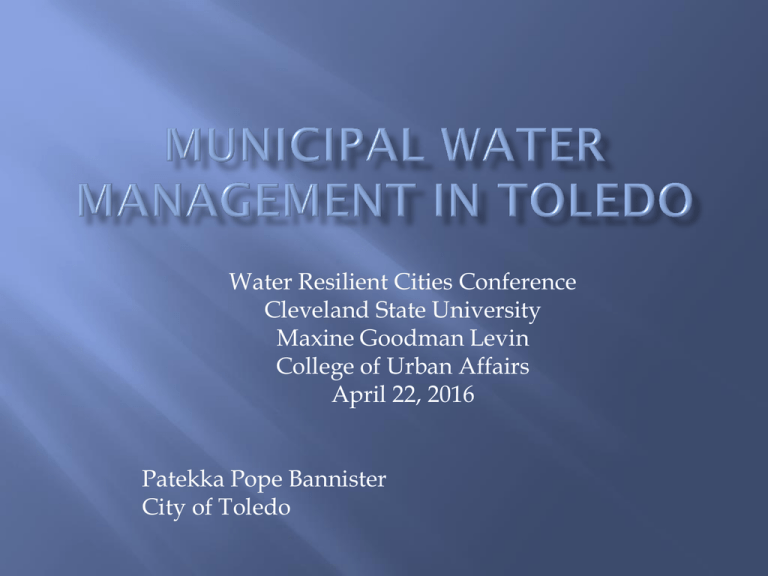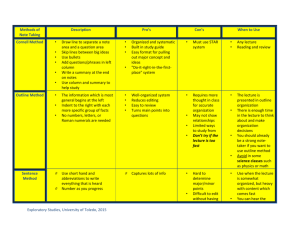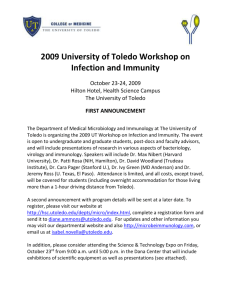Water Resilient Cities Conference Cleveland State University Maxine Goodman Levin
advertisement

Water Resilient Cities Conference Cleveland State University Maxine Goodman Levin College of Urban Affairs April 22, 2016 Patekka Pope Bannister City of Toledo Before AFTER Single family residential Median home income $25,384 (average income in Toledo $32,546) 1/12 acre lots (30 by 120-ft) 66 lots (46 with houses) 25% Homeowners* *Based on Lucas County Auditor AREIS Information 4 Total Project Area: 9.21 Acres Existing Open Space Area: 8.09 Acres Storm Water from On-Site Paved Areas: 1.2 Acres Storm Water From Off-Site Residential Areas: 5.3 Acres The retention capacity of the vernal pools and other green infrastructure elements installed as part of this project exceeds an estimated 650,000 gallons. Before After City of Toledo Guidance for managing rainwater & groundwater on residential properties Prepared By: Department of Public Utilities, Division of Engineering Services May 13, 2009 Contents: Rainwater in the Yard Downspout Discharge Sump Pump Discharge Infiltration Pits Sump Pump Discharge with infiltration pit and above ground overflow route. Downspouts to Infiltration Pits Where does the rainwater go? Connecting to the City Storm Sewer System For More Information Sustainability tool kit Rain Garden Homeowners manual/brochure Student coloring books Steps to reduce future flooding guide. • Installation of 250 kw system with future areas of up to 1 MW •Tie-In to Generator Building • Local and American Made Equipment: • Aggregate base and weed barrier to reduce maintenance http://live.deckmonitoring.com/?id=collins_park_1mw_proj ect OUR WATERSHED The City of Toledo provides 26 billion gallons of high-quality drinking water per year, serving 500,000 people through 125,000 residential, commercial and industrial accounts in Lucas, Wood and Fulton Counties in Ohio and Monroe County, Michigan. Algae bloom directly over water intake Microcystin detected beyond recommended reportable level Regulatory authority recommended issuing “Do Not Drink” advisory Accelerated treatment to reduce toxin Continued testing until water deemed safe to drink Existing EOP plan expanded to increase notification of external partners Expanded Staff Training (NIMS) Inviting Partners to participate in series of workshops –Nov 20- at UT Expand Emergency Scenarios Communicate clear roles for all parties On August 7, 2014, the scientific LimnoTech Toledo Water Intake buoy and monitoring sensors were deployed in the Western Basin of Lake Erie near the intake to assist with gathering realtime environmental data and to monitor harmful algal blooms (HABs).Quick-term response; placement expedited pH level and blue-green algae presence 3 probes relay water conditions The real-time information is collected every 20 minutes from the sensors. Each sensor performs a specific function. The program encompasses more than 45 separate projects over the course of 18 years, at a total cost of $521 million. The project is 72% complete. Currently working on $70M underground basin and pumping station at Joe E. Brown Park. The CSO Long-Term Control Plan (LTCP) calls for elimination of eight out of 32 permitted combined sewer overflow (CSO) discharge points/overflow locations. Currently seven have been eliminated




